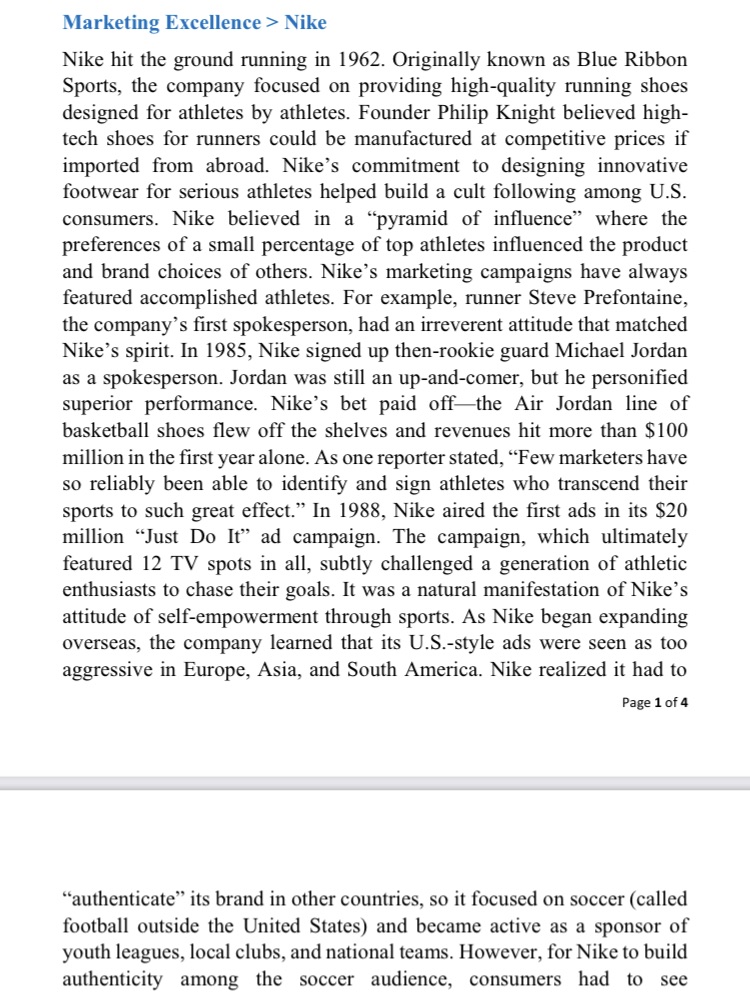1. What are the pros, cons, and risks associated with Nike's core marketing strategy?2. If you were Adidas, how would you compete with Nike?3. Critics of Nike often complain that its shoes cost almost nothing to make, yet are priced so high. Identify the elements of providing and communicating value that add to Nike's cost structure and result inthe high price of Nike shoes4. Who are Nike's target market/segments?5. Describe Nike's marketing communication strategy.6. Describe Nike's growth strategy.7. Describe Nike's competitors. What threats do they pose to Nike?
Marketing Excellence 3* Nike Nike hit the ground running in 1962. Originally known as Blue Ribbon Sports, the company focused on providing high-quality running shoes designed for athletes by athletes. Founder Philip Knight believed high- tech shoes for runners could be manufactured at competitive prices if imported from abroad. Nike's commitment to designing innovative footwear for serious athletes helped build a cult following among U.S. consumers. Nike believed in a \"pyramid of influence" where the preferences of a small percentage of top athletes influenced the product and brand choices of others. Nikeis marketing campaigns have always featured accomplished athletes. For example, nmner Steve Prefontaine, the company's first spokesperson, had an irreverent attitude that matched Nike's spirit. In 1985, Nike signed up then-rookie guard Michael Jordan as a spokesperson. Jordan was still an up-and-comer, but he personified superior perfonnance. Nike's bet paid offthe Air Jordan line of basketball shoes flew off the shelves and revenues hit more than $100 million in the first year alone. As one reporter stated, \"Few marketers have so reliably been able to identify and sign athletes who transcend their sports to such great e'ect.\" In 1938, Nike aired the first ads in its $20 million \"Just Do It" ad campaign. The campaign, which ultimately featured 12 TV spots in all, subtly challenged a generation of athletic enthusiasts to chase their goals. It was a natural manifestation of Nike's attitude of self-empowerment through sports. As Nike began expanding overseas, the company learned that its U.S.-style ads were seen as too aggressive in Europe, Asia, and South America. Nike realized it had to Page 1 of d \"authenticate\" its brand in other countries, so it focused on soccer {called tootball outside the United States} and became active as a sponsor of youth leagues, local clubs, and national teams. However, for Nike to build authenticity among the soccer audience, consumers had to see







